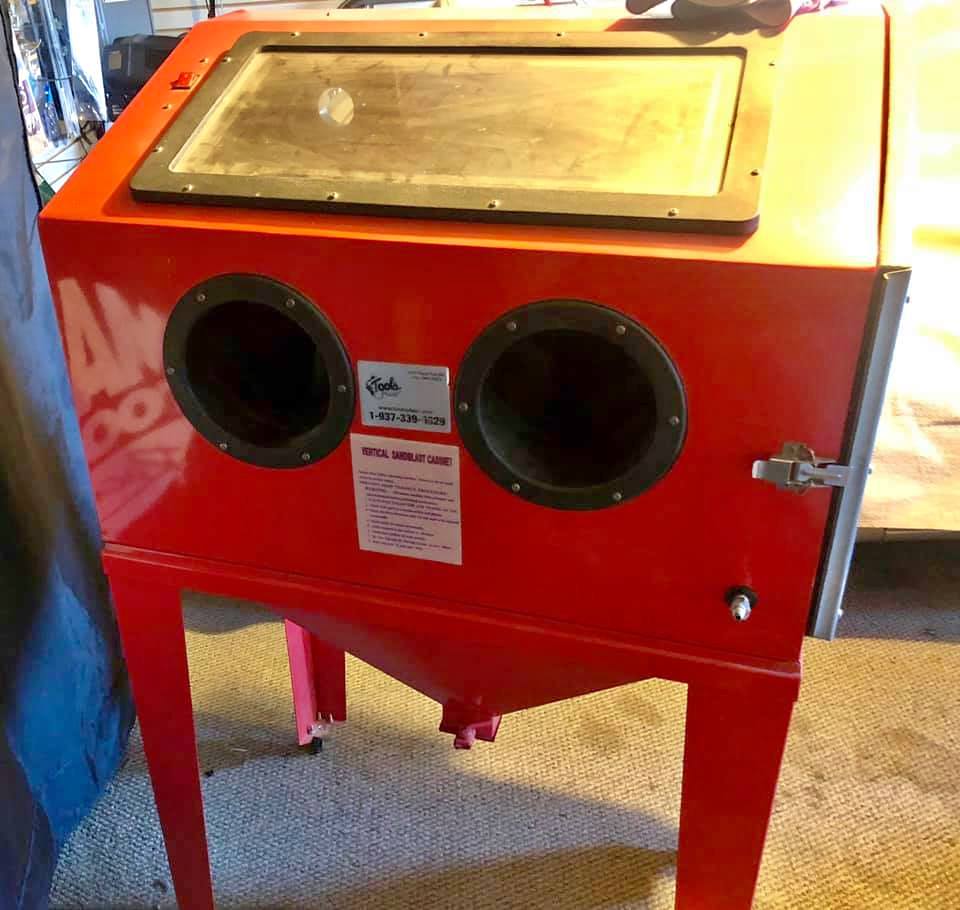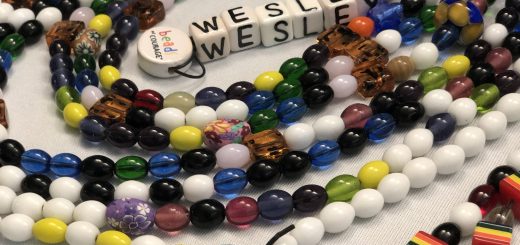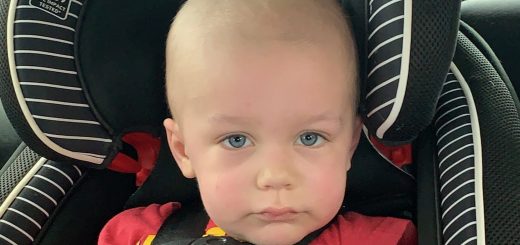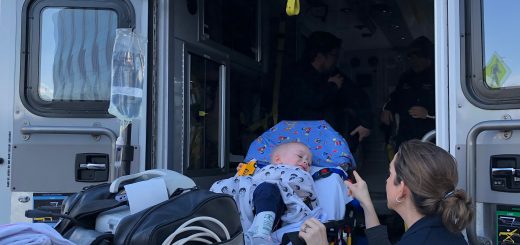Toxic toddler
Chemotherapy is the process of delivering just enough poison to cancer cells without killing everything else; the therapeutic drugs Wesley receives are highly toxic, and the rest of his medications are almost entirely devoted to counteracting the damage done to fix him.
Methotrexate – a sickeningly yellow substance that evokes for me That Yellow Bastard – blocks the body’s use of folic acid and turns his blood so acidic that it causes mouth sores, kidney problems, and the worst diaper rash ever. I expect his butt will be scarred for many years to come. It is such a harsh drug that they deliver it over 24 hours on a slow drip while he’s hospitalized so they can monitor his pH levels to make sure his body is able to clear it from his system.
Mercaptopurine (6MP) is taken at home every day, and has a huge number of side effects that are commonly associated with chemo – hair loss, appetite loss, nausea – and can cause liver problems, joint problems, and more. 6MP kills fast growing cells in order to stem the proliferation of cancerous cells, but as a result kills other, healthy cells such as blood, hair, and soft tissue cells which also rapidly grow.
Vincristine helps fight cancer growth by preventing certain cells from dividing, but also causes damage to healthy cells leading to many common chemo symptoms, as well as changing the way foods taste, jaw and joint pain, neuropathy in the hands and feet, dizziness, and not uncommonly the inability to walk.
PEG and Erwinaze are two different forms of the same drug – L Asparaginase – that fights cancer cells by blocking asparagine in the body. Cells need this to stay alive, and cancer cells are unable to produce their own while most healthy cells can, so this chemotherapy starves and kills cancer cells. The by-products of the destruction of asparagine cause the main side effects, which mostly look like exhaustion, but can be more severe in some cases.
Each of these therapies, and others Wes is going through, come with a cocktail of other drugs meant to counteract symptoms as well as mitigate damage.
What isn’t obvious at first is how toxic chemotherapy drugs can be to others in close proximity, like parents and siblings, who aren’t themselves regularly monitored for effects nor prescribed drugs to counteract damage. Contact with the drugs during delivery – spilling a bit from the bottle, or smearing some on the outside of a syringe – can build up dangerous levels in unsuspecting family members. Diapers are, perhaps, the worst. After nearly three years of diaper changes I’m long-since used to the smell, to the occasional smear of poop or pee; diapers just aren’t gross any more. What you find out quickly, though, is diapers are now toxic, particularly for babies, expectant mothers, and others who might be harmed by exposure to the toxic drugs and by-products that come out in the diapers of leukemia patients. Unlike the patient themselves, these bystanders aren’t being monitored, and aren’t given any drugs to counter the potential risk.
Update: just after posting this I stumbled on a thread about how families with septic tanks deal with the disruption of the natural bacteria in their tanks due to the drugs that enter the system through their child’s toilet. I hadn’t even contemplated that.
There’s something intimate and loving about changing diapers, taking care of a creature still so helpless they can’t even perform the most basic bodily functions without your help. It didn’t take much time to get used to the avoidance of germs so we don’t infect Wes, but I don’t think I’ll ever quite adjust to thinking of Wes’ fragile body as potentially harmful to us. Wearing blue gloves to change a diaper still shocks me.



